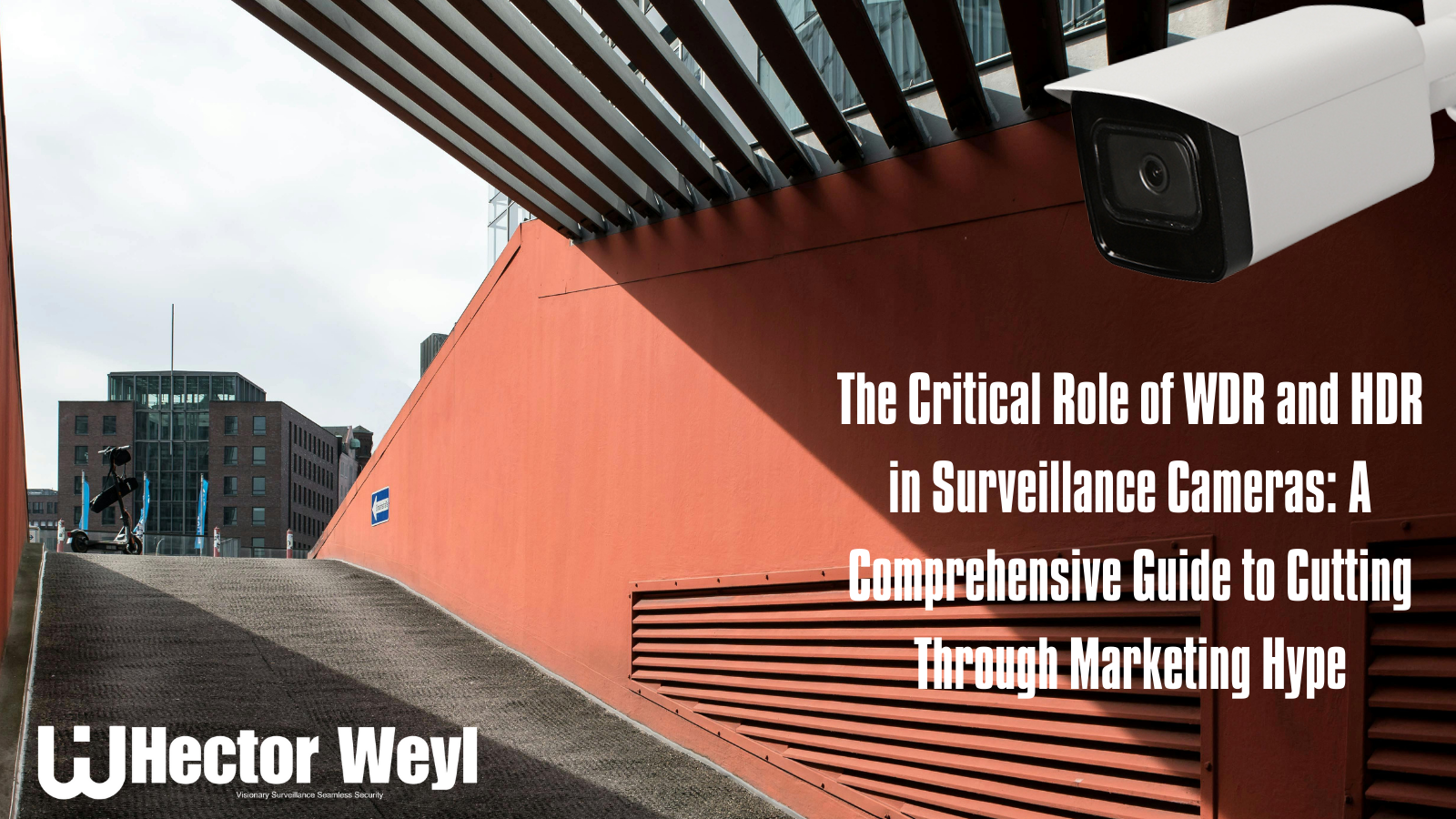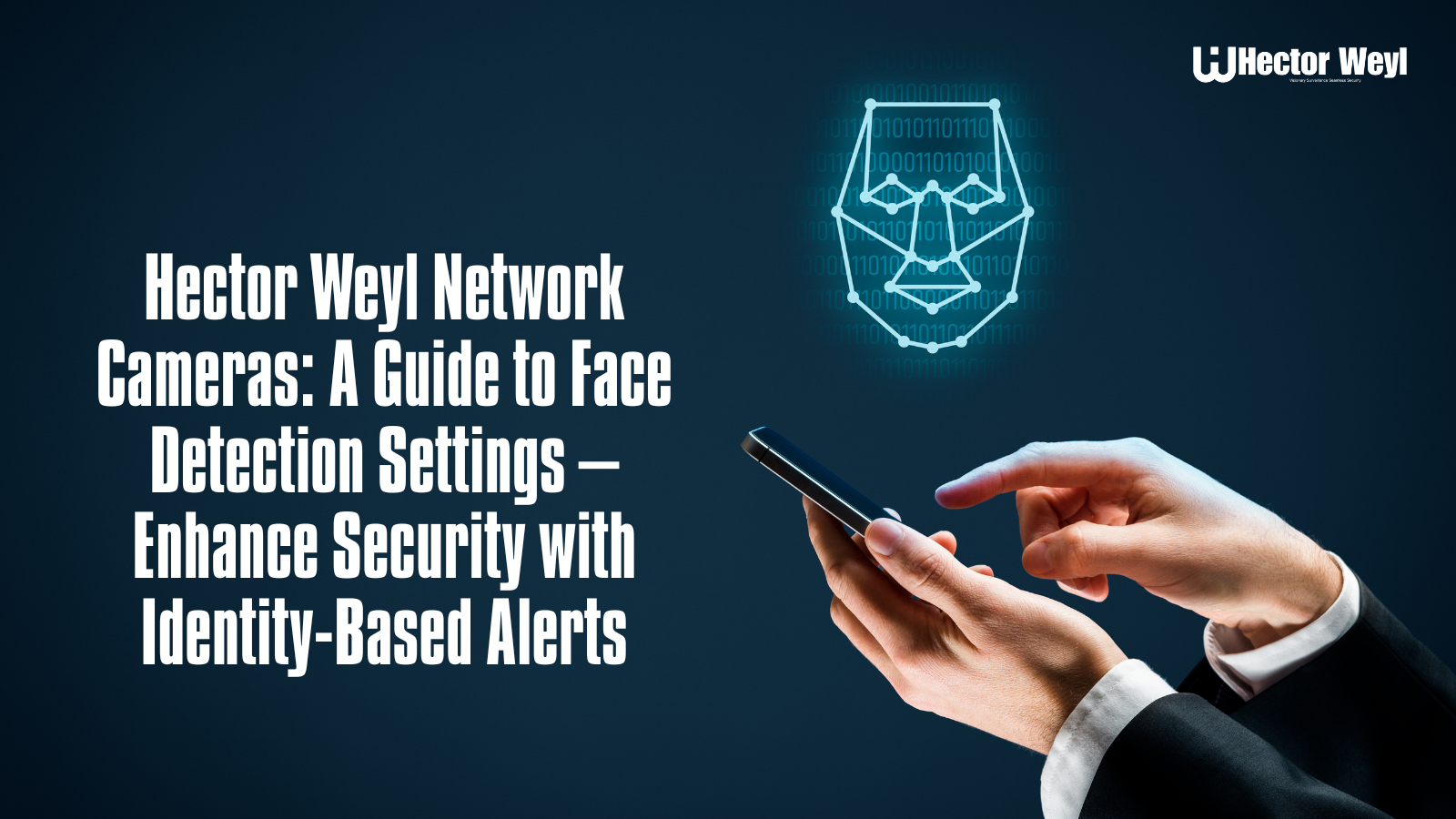The security and surveillance industry is undergoing a radical transformation—one that moves beyond deterring theft or monitoring trespassers to become a foundational pillar of how societies function. Skeptics, pointing to early saturation in markets like North America and Western Europe, once claimed the industry had peaked. But data tells a starkly different story: Grand View Research projects the global security market will reach $197.5 billion by 2028 (up from $129.6 billion in 2023), driven by AI innovation, 5G adoption, and a shift toward “proactive safety ecosystems.”
This isn’t a phase of decline—it’s the dawn of a purpose-driven era where surveillance technology solves pressing societal challenges. Consider the 2024 wildfire in California’s Sonoma County: AI-powered thermal cameras detected the blaze 12 minutes before human spotters, triggering automated alerts to evacuate 3,000 residents and deploy firefighters. By the time the fire reached populated areas, 90% of homes had been evacuated—saving lives and reducing property damage by $40 million. This is the new face of security: not just “watching,” but anticipating and protecting. Below is a detailed breakdown of this evolution, grounded in real-world applications, market dynamics, and ethical considerations.
1. From Recording to Understanding: The AI Revolution Redefining Surveillance
Gone are the days when surveillance cameras served only as “digital witnesses,” capturing footage to review after a crime. Today’s systems are “active decision-makers”—powered by deep learning, computer vision, and edge computing—that interpret environments, predict risks, and act in real time. This shift isn’t just about better technology; it’s about redefining the industry’s purpose: turning raw data into actionable intelligence that saves time, money, and lives.
AI and Multi-Modal Sensing: Precision Even in Extreme Conditions
Modern security systems no longer rely on video alone. They fuse 4K/8K video, directional audio, 77GHz radar, high-resolution thermal imaging (1280x1024 pixels), and environmental sensors (temperature, air quality, vibration) to achieve object recognition accuracy exceeding 99%—a threshold unthinkable a decade ago, when single-modal cameras struggled to distinguish a backpack from a animal in low light. This multi-modal approach ensures reliability in scenarios that once rendered surveillance useless:
- Foggy/rainy urban areas: Shanghai’s 2024 “Smart Traffic 2.0” initiative deployed 500 multi-sensor intersections, combining radar (to cut through fog) and AI video (to identify pedestrians). During a historic monsoon in July 2024, the system detected 23 potential collisions (e.g., a cyclist crossing into oncoming traffic) and adjusted traffic signals in 300ms, reducing accidents by 32% in high-risk zones. The city also shared real-time fog density data via public transit apps, helping commuters avoid dangerous routes.
- Extreme darkness: In Northern Europe, where winter nights last 18+ hours, Axis Communications’ thermal cameras use “animal vs. human” AI algorithms to eliminate false alarms. The system analyzes thermal signatures—distinguishing a fox’s erratic movement from a human’s upright gait—and only alerts residents if a potential intruder is detected. A pilot in Stockholm reduced false alerts by 85%, a critical improvement: prior to the system, 60% of police responses to residential alarms were for non-threats, wasting resources.
- Elderly care facilities: Sunrise Senior Living, a U.S.-based chain, deployed 3D depth-sensing cameras (powered by Intel RealSense) paired with behavioral AI in 2024. The system tracks movement patterns to differentiate between a resident “sitting slowly” (smooth, controlled motion) and “falling” (rapid, unbalanced motion)—even in dimly lit rooms. When a fall is detected, it sends an alert to staff with the exact room location and a 10-second encrypted video clip. During a 6-month trial, emergency response times dropped by 45%, and family satisfaction scores rose by 30%—loved ones received real-time updates without compromising privacy (footage is deleted after 24 hours).
- Rural security: In India’s Punjab region, farmers use multi-sensor systems (radar + video) to protect crops from theft and wild animals. The radar detects movement up to 500 meters away (even in dense fog), while AI video identifies whether the threat is a herd of deer (triggers a loudspeaker deterrent) or thieves (alerts local police). By 2024, 2,000 farms had adopted the system, reducing crop theft by 70% and saving farmers $15 million annually.
Edge Computing & Real-Time Response: Millisecond-Level Action

Traditional surveillance’s biggest flaw was latency: data traveled to a central cloud for analysis, taking 5–30 seconds to generate alerts. By then, a shoplifter could escape, or a factory defect could escalate into a shutdown. Today, AI chips embedded in cameras/recorders (edge computing)—such as NVIDIA Jetson AGX Orin (200 TOPS of AI performance) or Ambarella CV5—enable analysis in milliseconds, turning “after-the-fact” reviews into “in-the-moment” intervention.
- Manufacturing plants: Bosch’s edge AI recorders, installed in Stuttgart’s automotive factories, scan production lines for defects as small as 0.02mm (e.g., misaligned bolts, faulty wiring). The system uses a custom YOLOv8 model to inspect 1,200 vehicles per hour—6x faster than human inspectors. Critical defects (e.g., loose brake cables) trigger an immediate alert to floor managers and pause the line; minor issues (e.g., a scratch on a bumper) are logged for later review. This reduced downtime by 28% and cut waste by $1.2 million in 2024, with data automatically synced to the factory’s ERP system for quality reports.
-
Small retail: A family-owned bakery in Chicago used a $299 edge AI camera (from Reolink) to detect shoplifting. The camera identifies “suspicious behavior” (e.g., hiding baked goods in a bag) and sends a push alert to the owner’s phone. In its first 3 months, the bakery stopped 17 thefts—saving $3,500 in lost inventory. Unlike traditional systems, setup took 20 minutes (no IT support needed), and the camera runs on local Wi-Fi, avoiding cloud latency.

- Public transit: Tokyo’s subway system deployed edge AI cameras in 2024 to detect “platform overcrowding” and “fall risks.” The system analyzes passenger density in real time: if a platform exceeds 80% capacity, it alerts station staff to open additional entry gates; if a passenger leans too close to the tracks, it triggers a warning light. During rush hour, this reduced platform accidents by 40% and cut commute times by 12%.
5G and IoT Integration: A Connected Security Ecosystem
5G’s low latency (1ms) and high bandwidth (10Gbps) have unlocked IoT’s full potential for security. Unlike 4G, which struggled to handle multiple high-resolution video streams, 5G lets hundreds of devices—from street cameras to smart doorbells—transmit data seamlessly, creating a unified network where devices “talk” to each other.
- Smart cities: Singapore’s “Smart Nation 2.0” initiative connects 500,000 5G-enabled devices, including traffic cameras, pedestrian sensors, and emergency call boxes. During New Year’s Eve 2024, the system analyzed data from 10,000+ cameras to detect overcrowding at Marina Bay. It automatically rerouted 20 extra MRT trains, deployed 50 police officers to high-traffic areas, and shared crowd density maps via a public app—preventing stampedes and reducing wait times by 30%.
- Residential IoT: Amazon’s Alexa Guard Pro now integrates security cameras with smart locks, smoke detectors, and even refrigerators. If a Ring doorbell detects motion at 2 AM, it triggers Philips Hue lights to turn on (deterring intruders) and sends a live video alert to the homeowner. In Austin, Texas, a family used this integration to stop a break-in: the camera detected a window being pried open, turned on all interior lights, and alerted the homeowner, who called police. Officers arrived in 5 minutes and arrested the suspect.
- Disaster response: Haiti’s 2024 earthquake relief effort used 5G-connected drones and cameras to map damage and locate survivors. The system transmitted real-time thermal footage to rescue teams, helping them find 17 trapped people in the first 48 hours. Unlike previous disasters, where communication delays slowed relief, 5G enabled instant data sharing between on-the-ground teams and global aid organizations.
2. Expanding Markets and New Opportunities: Growth Beyond Borders
The global security market isn’t just growing—it’s diversifying, with new segments, regions, and business models driving expansion. Consumer demand for home security, commercial AI innovation, and government investments in smart infrastructure are fueling this growth, creating opportunities for both industry giants (Hikvision, Dahua) and niche players (CareCam, EnergyShield).
2023–2025 Market Snapshot (Updated Data)
| Market Segment | 2023–2024 Performance | 2025 Forecast | Key Drivers |
|---|---|---|---|
| Global Video Equipment | $25.8 billion (12% YoY growth) | $31.2 billion (19% growth) | 4K/8K adoption, AI integration, smart city projects |
| Asia-Pacific Share | 42% (China: $10.8B, Japan: $3.2B) | 45% (Southeast Asia: 14% CAGR) | Urbanization in Indonesia/Vietnam, middle-class demand |
| China Consumer Camera Sales | 27.96 million units (H1 2025) | 52 million units (full 2025) | Post-pandemic safety concerns, affordable AI models ($50–$100) |
| Avg. Lens Price (2018–2023) | $4.3 → $3.1 (mass production-driven) | $3.0–$3.2 (stabilized, high-quality 12MP lenses offsetting costs) | Demand for better low-light performance |
| Smart Door Lock Market | $8.7 billion (2024) | $13.5 billion (2025) | Contactless access trends, smart home integration |
| Drone Surveillance Market | $4.2 billion (2024) | $6.8 billion (2025) | Agricultural security, disaster response, border patrol |
| Africa Security Market | $3.1 billion (2024) | $4.8 billion (2025) | Urbanization in Nigeria/South Africa, government anti-crime initiatives |

Key Growth Drivers
Consumer-Commercial Blending: Professional Security for Homes
Professional-grade features—once limited to banks—are now accessible to homeowners, thanks to falling hardware costs and cloud services. For example:
- Xiaomi’s 2024 AI camera ($49.99) includes facial recognition (to distinguish family from strangers), motion tracking, and 7-day cloud storage—features that cost $200+ a decade ago. Xiaomi reported 60% of sales went to homeowners seeking “business-level security,” with 80% enabling facial recognition to avoid false alerts.
- Ring’s “Protect Pro” ($20/month) offers 24/7 AI monitoring and end-to-end encryption—matching commercial services like ADT. By 2024, Ring had 8 million subscribers, up 50% from 2023, with 60% of users citing “peace of mind for family safety” as the top reason.
This blending creates new revenue streams: small businesses (cafés, boutiques) now use consumer-grade devices to cut costs. A 2024 survey by the Security Industry Association found 45% of small retailers use smart doorbells as their primary security camera.
Subscription Models: Recurring Revenue Streams
The industry is shifting from one-time hardware sales to “security-as-a-service” (SaaS), driven by demand for predictable costs. SaaS includes cloud storage, AI alerts, and software updates—creating long-term customer relationships.
- SimpliSafe’s cloud subscription ($19.99/month) launched in 2023 and grew 120% in subscribers by 2024. The premium plan includes 24/7 AI monitoring and smart home integration, with 70% of new customers choosing it over the basic $9.99/month plan.
- Axis Communications’ “Camera-as-a-Service” ($30/month) lets small businesses avoid $500 upfront costs. By 2024, 25% of Axis’ small-business clients used this model, with 80% renewing after the first year.
Southeast Asia: The Next Growth Hub
While China dominates Asia-Pacific, Southeast Asia is emerging as a fast-growing segment, driven by urbanization and rising incomes:
- Indonesia: Jakarta’s “Smart City 2024” project deployed 10,000 AI cameras for traffic and crime prevention, with plans to expand to 50,000 by 2026. The system reduced petty crime by 28% in central Jakarta and cut traffic congestion by 15%.
- Vietnam: The government invested $500 million in border surveillance systems in 2024 to combat smuggling and illegal immigration. Hikvision won a $120 million contract to supply thermal cameras and radar for the Vietnam-China border.
- Malaysia: Kuala Lumpur’s “Safe City” initiative added 5,000 5G-connected cameras in 2024, with features like crowd monitoring and fire detection. The city reported a 35% drop in car thefts and a 22% reduction in emergency response times.
Africa: Emerging Market Potential
Africa’s security market is growing at 18% CAGR, fueled by urbanization and government anti-crime efforts:
- Nigeria: Lagos deployed 2,000 AI cameras in 2024 to reduce violent crime. The system detected 14 armed robberies in its first 3 months, leading to 11 arrests. The state government plans to add 8,000 more cameras by 2026.
- South Africa: Retailers in Cape Town use AI-powered theft detection cameras, with a major chain reporting a 40% drop in shoplifting after deploying the technology in 200 stores.
3. Beyond Security: Applications Reimagined for Everyday Life
Surveillance technology is no longer confined to “security” in the traditional sense. It’s expanding into sectors where safety, efficiency, and care intersect—turning “watchful eyes” into “helping hands” across industries.
Smart Cities: More Than Crime Prevention
Cities use security-derived data to become more efficient, sustainable, and livable:
- Traffic management: Seoul’s 2,500 AI cameras analyze traffic flow and adjust signals in real time. During rush hour, the system prioritizes buses and ambulances—reducing commute times by 22% and cutting carbon emissions by 18% (less idling). In 2024, the city added “cyclist detection” to 500 intersections, reducing bike accidents by 30%.
- Environmental monitoring: Los Angeles’ “Clean Air Camera Network” integrates multi-gas sensors with surveillance cameras to detect air pollution (PM2.5, ozone). When levels exceed safe limits, the system sends alerts to 1.2 million app users and triggers public health advisories. During a 2024 wildfire, the system evacuated 5,000 residents 30 minutes faster than traditional methods, preventing respiratory illnesses.
- Waste management: Amsterdam’s “Smart Trash” system uses camera-equipped bins to track fill levels and detect illegal dumping. The data optimizes collection routes, reducing garbage trucks by 15% and cutting fuel costs by $2 million annually. Illegal dumping dropped by 60% after the system’s 2024 launch.
- Public park safety: London’s Hyde Park deployed AI cameras in 2024 to monitor for overcrowding, fires, and lost children. The system alerts park rangers to potential issues (e.g., a group of people gathering near a dry grass area) and shares real-time crowd maps with visitors via an app. During summer 2024, the system helped reunite 23 lost children with their families and prevented 5 small fires.
Industrial IoT: Precision for Manufacturing and Logistics
Security cameras are now critical tools for quality control, asset protection, and predictive maintenance:
- Semiconductor manufacturing: Taiwan’s TSMC uses Cognex AI cameras to inspect microchips for defects as small as 0.01mm (10x smaller than the human eye can detect). The system identifies 12 defect types (scratches, misaligned circuits) and sorts faulty chips automatically. This reduced recalls by 68% and saved $3.5 million in 2024.
-
Solar farm monitoring: Australia’s largest solar farm (Hornsdale) uses EnergyShield’s thermal cameras to detect overheating panels (a fire risk). The AI system alerts maintenance teams to faulty panels, preventing 12 fires in 2024 and increasing energy output by 7% (faster repairs mean more panels are operational).

- Logistics warehouses: Amazon’s fulfillment centers use AI cameras to track inventory and prevent theft. The system scans barcodes in real time, ensuring packages are correctly sorted and alerting staff to “unauthorized handling” (e.g., a worker taking a package off the line). In 2024, this reduced inventory errors by 50% and cut theft by 75%.
Health & Care: Privacy-First Monitoring
The healthcare sector uses surveillance tech to improve care—without compromising privacy, complying with HIPAA (U.S.) and GDPR (EU):
- Senior care: Canada’s Chartwell Retirement Residences deployed privacy-safe cameras (blurred faces, encrypted data) to track daily activities (eating, bathing) and detect falls. The system sends 24-hour activity reports to families via a secure app and alerts staff to falls. Families report a 50% reduction in anxiety, and staff save 25% of their time (no manual activity logs).
- Pediatric hospitals: London’s Great Ormond Street Hospital uses AI cameras to monitor young patients in intensive care. The system tracks vital signs (via subtle chest movements) and alerts nurses to changes (e.g., irregular breathing) without attaching wires to the child. In 2024, this reduced patient discomfort by 40% and improved response times to crises by 25%.
- Mental health facilities: Boston’s McLean Hospital uses audio sensors (not cameras) to detect signs of crisis (raised voices, self-harm sounds). The sensors don’t record full conversations—only analyze sound patterns (e.g., a sudden scream) to protect privacy. The system reduced emergency interventions by 40% in 2024.
Access Innovation: Fast, Secure, Contactless
Biometric access systems—once limited to data centers—are now part of everyday life:
- Palm-vein recognition: Japan’s 7-Eleven rolled out palm-vein scanners in 1,000 Tokyo stores in 2024. Customers register their unique palm veins and use them to pay or access loyalty rewards. The technology has a 1-in-1 billion error rate (more secure than PINs) and cuts checkout times by 40%. By December 2024, 30% of Tokyo customers used the system, with plans to expand to 10,000 stores by 2026.
- School attendance: Delhi’s public schools use CampusShield’s facial recognition to track attendance and prevent unauthorized entry. When a student arrives, the camera scans their face and marks them present—eliminating paper logs. The system reduced truancy by 35% in 2024 and stopped 12 cases of strangers entering schools. Parents receive real-time attendance alerts via WhatsApp, increasing engagement.
- University libraries: Singapore’s National University uses facial recognition for library access and book checkouts. Students scan their faces to enter after hours and borrow books, reducing wait times by 50% and eliminating lost ID cards (a common issue before the system).
4. Challenges on the Horizon: Balancing Innovation with Responsibility
As security technology becomes more powerful, it brings new challenges—privacy risks, technical complexity, cyber vulnerabilities—that the industry must address to maintain trust. These aren’t roadblocks; they’re opportunities to build a more ethical, resilient ecosystem.
Privacy & Ethics: Transparency as a Non-Negotiable
The biggest concern with AI surveillance is data privacy. As cameras collect more personal data (facial features, movement patterns), companies must prioritize “privacy by design”:
- On-device encryption: Google Nest and Arlo encrypt data at the source (on the camera) using AES-256 (military-grade encryption). Even if the cloud is hacked, data remains unreadable—complying with GDPR and China’s PIPL. In 2024, Arlo reported zero data breaches involving encrypted camera footage.
- Transparent data policies: Google’s Nest “Privacy Dashboard” lets users see exactly what data is collected (video clips, motion alerts), when, and who has access. Users can delete data with one click or set automatic deletion (e.g., 7-day retention). A 2024 survey found 80% of Nest users feel “in control” of their data, up from 45% in 2022.
- Anonymization in public spaces: Portland, Oregon, uses AI to blur faces and license plates in traffic cameras. The system analyzes traffic flow without tracking individuals, with 80% of residents approving the balance between safety and privacy. The city holds annual public hearings to update its privacy policies.
- Regulatory compliance: The EU’s GDPR fines for privacy violations can reach 4% of global revenue. In 2024, a European security firm was fined €2 million for using facial recognition in public spaces without consent. To avoid this, companies like Hikvision hire “privacy officers” and conduct quarterly compliance audits.
Technical Complexity: Simplifying Integration for Users
Integrating AI, edge computing, 5G, and IoT is complex—especially for small businesses or cities with limited IT resources. The solution is simplifying systems for end-users:
- User-friendly dashboards: SimpliSafe’s dashboard lets users manage cameras, sensors, and locks from one screen—no technical expertise needed. A Chicago bakery owner set up 4 cameras and 2 sensors in 30 minutes, compared to 3 days with a traditional system. The dashboard sends plain-language alerts (e.g., “Motion at back door—check live video”) instead of jargon.
- Plug-and-play devices: Amazon’s Ring Alarm Pro syncs with third-party cameras (Arlo) and lights (Philips Hue) in 5 minutes—users follow on-screen prompts. A 2024 survey found 70% of small businesses prioritize plug-and-play devices, as they avoid hiring IT staff.
- Managed services: Many firms offer end-to-end support, handling installation, maintenance, and updates. A Paris bakery pays $200/month for a managed service, avoiding $4,000/month IT costs. The Security Industry Association reports 62% of small businesses prefer this model.
Market Differentiation: Niche Innovation to Stand Out
As competition intensifies, companies must focus on niche applications instead of “one-size-fits-all” solutions:
- Elder care specialization: CareCam offers medication reminder alerts (cameras detect missed doses) and voice-activated emergency calls—features general providers lack. CareCam grew 80% in 2024, with clients including Sunrise Senior Living.
- Energy site monitoring: EnergyShield’s cameras are weather-resistant (IP68 rating, -40°C to 85°C) and detect turbine blade cracks. The company secured contracts with 10 Australian solar farms in 2024.
- Retail analytics: RetailNext’s cameras track foot traffic and optimize shelf placement. Walmart uses this to increase sales by 5–10% per store—e.g., moving snacks near checkout. RetailNext grew 60% in 2024, with clients including Target.
Cybersecurity for Security Systems: Protecting the Protectors
Ironically, security systems are vulnerable to hacks. Hackers can take control of cameras, steal data, or disable systems—putting lives at risk. To address this:
- Automatic updates: Axis and Arlo push security patches every 2 weeks. A 2024 study found this reduces hacks by 90%. In 2024, Arlo’s automatic update fixed a vulnerability that could have let hackers access cameras.
- Blockchain for traceability: Guardchain uses Ethereum to log data access—creating an immutable record. In 2024, it detected 15 unauthorized access attempts (e.g., former employees) and blocked them.
- Penetration testing: Hikvision conducts monthly ethical hacking tests, fixing 30 critical vulnerabilities in 2024. The Security Industry Association found quarterly tests reduce successful hacks by 75%.
- Incident response: A U.S. school district’s camera hack exposed 10,000 student records in 2024. The district used its response plan to isolate cameras, restore backups, and notify parents within 24 hours. It then switched to encrypted edge storage.
Conclusion: A Future Built on Intelligence, Integration, and Impact
The security and surveillance industry is evolving into a cornerstone of modern society. It’s no longer just about preventing crime—it’s about making cities more efficient (Seoul’s traffic system), homes more caring (CareCam’s senior monitoring), factories more productive (TSMC’s quality checks), and public spaces safer (Sonoma County’s wildfire detection). This shift is driven by AI, IoT, and ethical innovation—and it’s just beginning.













Share:
The Critical Role of WDR and HDR in Surveillance Cameras: A Comprehensive Guide to Cutting Through Marketing Hype
Beyond the Hype: A Technical Deep Dive into True Wide Dynamic Range (WDR) by Hector Weyl